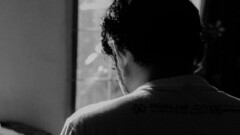I get a little nervous when I see an artist jump mediums. Not all artists make that transition from one medium to another—good authors have written awful songs and great songwriters have written really bad books. But Matt Papa has made it work. He has recorded some excellent songs (e.g. Come Behold The Wondrous Mystery) and has now also written a fantastic book. In Look and Live he wants you to behold the soul-thrilling, sin-destroying glory of Christ. Even better, he will help you do it.
The book begins with the assumption—the biblically safe assumption—that we are worshippers. The question is not if, but what we will worship. If it is really true that it takes ten thousand hours of practice to become an expert on anything, well, we all become expert worshippers at fourteen months of age. We were created to worship and we will worship. “As human beings we are plagued with inordinate affections. We love green pieces of paper more than God. We love balls made out of pigskin more than God. We’ve shown we even love apples more than God. We, like Esau, have traded our birthright—the dignity of our shameless, joy-filled, glory-beholding, glory-reflecting existence—for a bowl of beans.”
What is the solution to this misplaced worship?
We don’t need more willpower. We don’t need to get ourselves together. We need a greater thrill … a more captivating beauty.
What we need is a vision of God.
We need to see glory.
And for that reason Papa’s goal here is “to help you overcome idolatry and certain sadness by pointing you to the all-satisfying, sin-destroying glory of Jesus.”
He does that by reflecting on the glory of God, and then seeing the glory of God as it is displayed in creation, mission, obedience, suffering, and, especially, the cross of Christ.
He draws deeply from the wells of church history and also from the best of today’s writers. Papa’s strength is not so much in saying new things, but in distilling the best of the Christian thinkers of yesterday and today. He writes meditatively and reflectively. His joy and delight is contagious. He may be at his best in chapter 4, “The Blazing Center,” where what he writes is deep and beautiful and brilliant. It covers familiar territory but in a fresh and free way. It may be one of the best chapters of any book I’ve read this year and it will bear repeated readings.
When I preach I always try to share the gospel differently—to use fresh words and fresh ways of saying those same old truths. It’s not that there is new content to the gospel message, but there are ways of saying it that restore and recover some of that excitement. And that is what Papa does here.
By way of critique, I do wish had had focused a little more attention to the resurrection. We love to behold the cross, and need to behold it, but we also need to behold the empty tomb. Without the empty tomb, the gospel is incomplete.
When an artist is successful in one medium, he may well be offered opportunities to participate in another, and that’s exactly where some too many bad books come from. But this, this was the book Papa was meant to write. It’s a good one and I can’t recommend it too highly.










